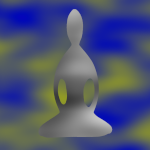Dear Friends,
Over the series of talks, Gil Fronsdal has traced a journey along which our saddha may progress. This journey may be linear, or we may jump around, or we may spiral in ever deepening ways.
We started with faith, which inspires us to practice. Then confidence, when we start to value the practice and see the possibility. There’s a growing conviction that this really works, which helps us stick with it, even when there is difficulty. And a trust emerges, when we can rest into the natural processes unfolding.
The fifth aspect, he calls acceptance, and he cautions that this isn’t a practice for beginners but something that develops.
https://www.audiodharma.org/talks/11076
I think this caveat is useful, because it’s easy for “Type A” striving folks like me to want to jump to the end without going through process. That can lead to what’s sometimes called “spiritual bypassing.” Something difficult comes along, and instead of working with it and through it, I have seen my own tendencies to have the story, “oh, but I’m a meditator – this shouldn’t bother me – I’m accepting this.” But no, I’m not accepting it, I’m stuffing it down with some chocolate chip cookies. 😀
Gil talks about this phase as “a deep acceptance of the underlying truths of reality and our life.”
One of the truths he mentions is “a deep acceptance of the impermanence of phenomena”. On one level, we all get that concept – we see birth, aging, illness, and death, and all sorts of change. And yet we often live in denial of that. Through our practice, we can get intimate with the flow – a breath, a body sensation, a sound, begins, persists, and ends – and at some point, we can develop a level of acceptance of this flow, and peace can arise.
I think of my cousin John, who died a few years ago after living some while with pancreatic cancer. The last time I got to visit with him, a couple months before he passed, I remember sensing the deep peace of acceptance that he embodied. Sure, he still talked about his hope to see his then two year old son start kindergarten, but there was no clinging with that.
Gil says,
In the same way, as our practice gets deeper, as our freedom becomes larger and larger, as our trust, faith, confidence, conviction, and our deep acceptance of life become fuller and fuller — it stops being something we do. It stops being something we can identify with.
To accept this emptiness, this absence of what had been supporting us for such a long time, is a beautiful thing. It matures when there is no more need for faith — when there is no need for confidence, conviction, trust, or acceptance — because we don’t cling to anything. We are at peace. We are at ease.
That’s what I learned from John.
Reflection:
Can you think of some acceptance that has developed in your life or practice? Or can you think of a friend, elder, mentor, or other inspirational being who embodies this for you?
Practice:
Jill Shepherd led a meditation on accepting, allowing, opening to how it is right now (27 minutes). She uses the analogy of sitting like a mountain. Does that help you feel some stability and acceptance?
https://www.dharmaseed.org/talks/72553/
As Gil closed his talk: “May faith support you, and take you all the way to a place of freedom from all clinging, so that you can experience deep happiness and well-being — not just for yourself, but as a gift to others.”
With good wishes,
Andrea
